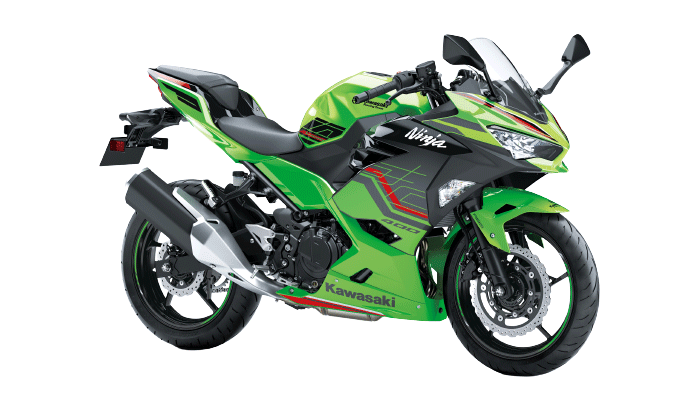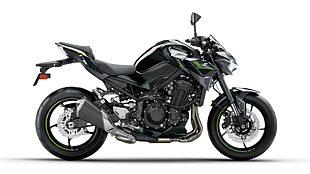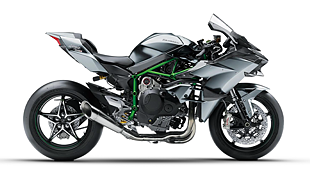Introduction

Why to buy it?
- Extremely tractable yet engaging engine
- Accessible and comfortable ergonomics
- Great handler
Why avoid it?
- Overpriced for what it offers
- Lacks features
Six lakh rupees for a 400cc motorcycle sounds absurd especially in the Indian market where value for money is a fundamental buying factor. But Kawasaki India seemed quite optimistic with the pricing when they launched the Ninja 400 in its BS6 avatar in 2022, a couple of years after taking it off the shelves.
Although apart from the slightly more environmental-friendly engine and minor visual changes, the Kawasaki Ninja 400 remains the same otherwise. Does the ‘don’t change it if it ain’t broke’ approach still work in its favour? And if so, does it still justify its premium pricing making for a better buy over the completely revamped KTM RC 390? What about the TVS Apache RR 310 that offers similar performance and is filled to the brim with features while being priced Rs 2.5 lakh lesser?
We rode the motorcycle extensively in the city and highway to answer all these questions and here is what we came back with.
Styling and Quality

You’d be forgiven if you mistake the Ninja 400 for the ZX-6R at first glance. The aggressive snake-like front end or the signature style of the tail lamp mimics its bigger sibling. Now the styling hasn’t changed since the last model but we aren’t complaining. Sharp lines and creases make up for most of its bodywork making the Ninja 400 look fast even at standstill with the iconic Lime Green paint scheme only adding to its charm.

For the new model though, the Ninja 400 receives updated KRT edition graphics. Although subtle in difference, these give it a fresher appeal. You could also have the motorcycle in black, but the green is what makes the Ninja a Ninja isn’t it?

That said, the Ninja 400 is a complete attention magnet, exuding the presence of a much bigger bike. Wherever I went with the Ninja 400, long looks of admiration and awe followed. Look closer at the fitment of parts and you wouldn’t be disappointed either. Everything is well put together and well built. Components like the body-mounted mirrors and switchgear feel premium to touch and operate as well.
Ergonomics and Comfort

Well, unlike a typical sportbike, the Ninja 400’s seating ergonomics are pretty relaxed- more so because it is a sport-touring motorcycle rather than a track tool. The clip-ons are higher and the pegs are only slightly rear-set. So you don’t sit fully committed at all times. However, when it is time to tuck in, the seat offers enough space to shift back.

Speaking of which, the seat is wide and well-cushioned. Even after riding for around 200 km at a stretch, there were no signs of discomfort. However, it is not the case with the pillion. The girlfriend complained about the cushioning feeling uncomfortable after riding pillion for a few kilometers in traffic.
But with that said, while it does look like it’s a big bike, the Ninja 400 is welcoming. I am 5’8 and even with my arms fully stretched out, I can have my legs on the ground easily.
Performance and Handling

As I belted the Ninja 400 down the end of the highway and was met with the infamous traffic of Mumbai, I could only think of how the 399cc engine seemed to follow the teachings of a wise Japanese monk.
Let me explain.
Sportbikes are usually a chore to ride at slow speeds in the city, but the Ninja is unfazed. The engine can putter along as low as 2500rpm in 6th gear while humming its smooth parallel-twin note. Not a shudder or complaint even at 32kmph. Give it some gas and the motorcycle happily picks up speed without the need to downshift.

Around the mid-range at 6000-7000rpm is where the engine feels the strongest. Even though the BS6 version has lost out on nearly 4bhp and now churns out 44.3bhp, its engine character hasn’t changed much. Whip the throttle and the engine puts out everything it has, surging ahead enthusiastically.
Even more brilliant though is the way it keeps building speed. 150kmph creeps up on the LCD almost effortlessly as the Ninja 400’s mill turns into a complete screamer of an engine. It maxes out at 12,000rpm while we saw a top speed of around 185kmph on the dash. See? A motorcycle couldn’t get more philosophical than that- act calm and composed until the situation demands it- then give it everything you have. And if you are wondering if it heats up and threatens to burn your thighs, you'd be wrong. The Ninja 400 manages runs cool even after pushing it to the limit and in neck-to-neck traffic too.

That said, the motorcycle cuts down on speed equally well too. While feedback, the initial bite is something that could be better, the progression and stopping power from the brakes are spot on. Even though it only comes with ABS, seasoned riders wouldn’t feel the need for any other intervention. What I also liked was the slick-shifting gearbox and the light clutch action which adds to the delightful riding experience the Ninja 400 offers.

To complete its appreciable performance, Kawasaki has bound it to great handling abilities. The motorcycle is light on its feet and requires little input while making quick direction changes. With a sprightly engine, manoeuvring it in traffic feels like a no-brainer too. It’s a hoot around corners as well for the same reason. It tips in effortlessly and doesn’t need many mid-corner adjustments. While the Dunlop tyres are grippy, they seem to lack feedback and rob a bit of the otherwise enticing experience.
Features and Technology

The Ninja 400’s feature list isn’t the most extensive. It only includes dual-channel ABS and LED lighting for the headlamp and tail lamp. You also get a white-on-black LCD that offers simple information, missing out on Bluetooth connectivity for convenience.

A slipper clutch is thrown in for good measure too. All of these get the job done, but the need for features even as a bragging right seems necessary in 2023- especially when the competition offers much more for half the price.
Fuel Efficiency

On our fuel efficiency test run with moderately high traffic, the Ninja 400 returned 26.7kmpl- which is quite impressive for a 399cc, parallel-twin motor. With a 14-litre fuel tank, the Ninja can cover 350-380km in a single full tank. It is important to note that we tested the motorcycle at speeds not more than 70kmph with the rev counter not crossing 5000rpm.
Should you buy it?

Well, I do like what the Kawasaki Ninja 400 brings to the table as a motorcycle. Right now it is truly enjoyable to ride- in the city and on the highway. It is also engaging enough to have a ball around a race track. It treats you with comfort and manages to grab eyeballs with its ZX-10R-like styling.
But in contrast, it also is a motorcycle that fails to fully justify its Rs 6 lakh price tag. It is not only Rs 2 lakh more expensive than the Ninja 300 which only has a few lesser horses and nearly the same features but also the TVS Apache RR310 which lists features not seen on any other motorcycle in that price point. Its pricing seems even more exorbitant when you consider the KTM RC390 which costs Rs 3.81 lakh. While one could argue that the previous RC390 was bound to give you a backache after a while, the newer model is much more refined and comfortable- attributes that the Ninja 400 also boasts about but at a much higher price tag.

That said, the Ninja 400 would surely be a good value with more modern features. But even in its current state, pricing that is Rs 1.5 lakh lesser would be its sweet spot- and that would only be possible if Kawasaki India manages to localize production in India rather than selling it as a CBU.
To sum it up, the Kawasaki Ninja 400 is an extremely likeable motorcycle to ride but with better value-for-money options out there we won’t recommend it in our ‘Top sportbikes to buy under 5 lakh’ list.
Photos by Kapil Angane
Gallery
1/36
Kawasaki Ninja 400 Front Disc Brake
Double Tap to Zoom








































![KTM 390 Adventure X [2025] KTM 390 Adventure X [2025]](https://imgd.aeplcdn.com/272x153/n/cw/ec/190885/390-adventure-x-2025-right-side-view.jpeg?isig=0&q=80)